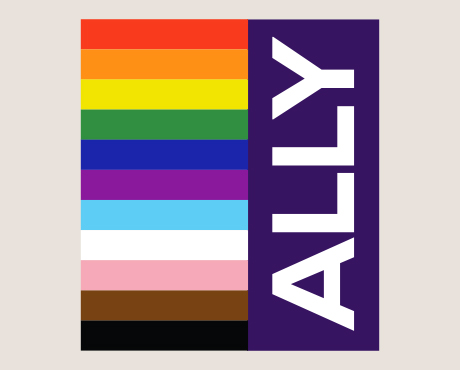
Include an additional SELT question
News 17 MayStaff can include an additional question in the Student Evaluation of Learning and Teaching (SELT) survey for units that are offered in Term 2 (Foundation Studies) (202334).
19 April 2023
Share
The Centre for Education and Innovation (CEI) has been testing the new AI detection tool from Turnitin which flags text that may have been written by AI. Here is a comprehensive guide to how to use it effectively.
Turnitin has a new AI writing detection tool that helps flag text that may have been generated by AI. It appears as a percentage in an AI indication button for staff and is not visible to students. The AI writing detection tool was released on 5 April, and no universities were able to access the tool prior to this release date. The Centre for Education and Innovation (CEI) is investigating its strengths and weaknesses.
The tool provides an overall percentage that represents the proportion of the work that the Turnitin tool is confident was written by generative AI (with 98 per cent confidence). Turnitin advise the percentage shown in the AI writing detection indicator and AI writing report should be used with caution. It does not indicate academic misconduct, and further review of the submission should be undertaken.
It also highlights the text that it believes was AI generated. This is separate from the text matching for the Similarity report. The highlighted text may not be a full representation of the actual AI generated text; it does not indicate purportedly AI generated text to the same degree of accuracy as it does with text matching.
Testing suggests that there may be both false positives (relatively rare) and false negatives (more common). This tool may be useful as an initial flag to indicate that generative AI may have been used. However, due to the risks of false positives, it should not be used as the sole evidence to forward an allegation of potential academic misconduct. Also note that there are false negatives, so a low percentage does not necessarily mean that there is no AI generated text.
Currently, Turnitin has not provided the capacity for staff to download this report as a pdf. More information about using the tool is available in LEO guides under ‘Detection indicator’.
Under ACU’s Student Academic Integrity and Misconduct Policy, unauthorised use of generative AI in work submitted for assessment is a form of academic misconduct. Due to the risk of false positives and negatives, this tool should be used in conjunction with other features of the submitted work that may indicate unauthorised use of AI, including:
If you see a work that Turnitin flags as being AI generated, always look for other features that may indicate AI has been used. Visit Academic Integrity FAQs for a more comprehensive list.
Contact Academic.Integrity@acu.edu.au if you require additional support.

Staff can include an additional question in the Student Evaluation of Learning and Teaching (SELT) survey for units that are offered in Term 2 (Foundation Studies) (202334).

Read a summary of the Academic Board meeting held on 12 April 2023.

The university takes academic misconduct very seriously. For a student, receiving an academic misconduct allegation letter can be highly stressful. Support is available.

Read the latest on the MFA for Students rollout.

If you are considering applying for promotion, come along to an upcoming information session – Understanding the New Academic Promotions Process.

ACU Co-Lab is proud to unveil its latest commercialisation program, Translate to Innovate Series, a specialised program targeting ACU’s research community.

A message from Executive Dean of Theology and Philosophy Professor Dermot Nestor: Purpose is what defines a Catholic university and galvanises the people who work within it.

See the TechOne P2P work instruction videos and modern slavery training modules which have been created to help grow your understanding of the subject matter, your responsibilities and the processes i...

A recording of last week’s Global Learning Showcase is now available to view if you were unable to attend. See what you may have missed.

Do you implement innovative strategies in your teaching that motivate and inspire students to learn? Receive recognition for your efforts by applying for an ACU Citation or VC Teaching Award.

Promotion recognises and rewards an academic’s achievements at their current level of appointment that warrant promotion to the next academic level. This year’s round marks a significant shift in the ...

A message from Executive Dean of Law and Business Professor Andrew O’Neil: I am committed to ACU’s continued success, with a contribution that places a premium on impact and growth.

Stay informed on recent changes to the Procurement Policy, approvals for purchases, how to raise mandatory purchase orders and related knowledge base articles.

As of Monday 8 May, Service Central phone support hours have changed to 9am–5pm AEST. Live chat remains available between 9am–5pm AEST.

You’re invited to attend local morning or afternoon tea events at the following local campuses hosted by the ACU ALLY Network, with the support of the Campus Deans and campus LGBTIQA+ Student Societie...

ACU’s business incubator, Co-Lab is delighted to announce details of its 2023 Circular Economy Incubator Series, designed for people and businesses with principles and practices of circular economics...

Do you have innovative ideas for program and curriculum development or initiatives to enhance student learning experiences that would benefit from funding? CEI has launched Teaching Development Grants...

Attend an online showcase to meet the Global Learning team, gain useful advice and find out how our various learning and engagement programs are developed and managed.

A message from Interim Provost Professor Meg Stuart: A unique new program for first year students is improving student retention at ACU.

Register for a webinar presented by the ACEN on the Graduate Outcomes Survey, focusing on a three-year evaluation of student participation in Work Integrated Learning.
Visit Service Central to access Corporate Services.